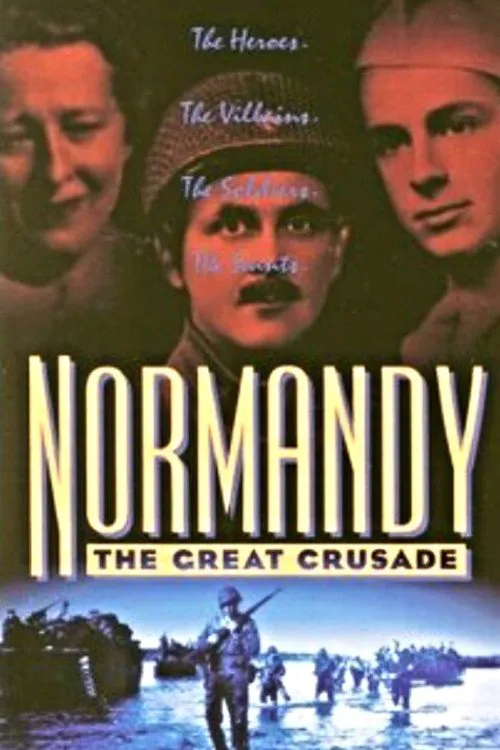Normandy: The Great Crusade

Intrigue
Normandy: The Great Crusade is a poignant and powerful documentary film that delves into the pivotal moment of World War II, the Allied invasion of Normandy on June 6, 1944. The film is an assemblage of personal accounts, archival footage, and historical recordings that bring the events of D-Day to life in a deeply moving and intimate manner. The documentary begins with the setting of the stage, as the Allies prepare for the invasion. We see archival footage of the buildup of troops and equipment, as well as personal letters and diaries of those who were about to embark on one of the most perilous missions in history. The tone is solemn and introspective, setting the mood for the epic events that are to follow. As June 6, 1944, approaches, the tension builds, and the film begins to reveal the personal stories of those involved. We meet American soldiers, British paratroopers, and Canadian infantrymen, all of whom are about to face their greatest challenge. Their letters, diaries, and home movies provide a glimpse into their hopes, fears, and anxieties as they prepare to go into battle. The invasion itself is recreated through the use of vintage newsreels, military footage, and period music. The images are stunning, capturing the chaos and confusion of the landings as Allied forces pour onto the beaches of Normandy. We see the iconic moments of the war, from the first waves of troops hitting the beach to the struggle to gain a foothold in the face of fierce German resistance. As the film delves deeper into the day's events, it becomes clear that the invasion was not just about military might but about the human spirit. We see how individual soldiers, often just teenagers, found the strength to carry on in the face of overwhelming odds. We hear their stories, told through their own words, of the horrors they witnessed, the comrades they lost, and the bonds they formed in the midst of chaos. One of the most powerful aspects of the documentary is its use of personal accounts. The letters, diaries, and home movies provide a unique perspective on the events of D-Day, allowing the viewer to connect with the individuals involved in a way that's not possible through more traditional historical accounts. We see a young American soldier, for example, nervously waiting for his chance to go ashore, only to find himself face-to-face with the enemy in a desperate bid for survival. The documentary also explores the significance of D-Day, not just as a turning point in the war but as a turning point in history. The invasion marked the beginning of the end of Nazi Germany's dominance in Europe, and the film captures the moment when the tide of the war finally began to turn. We see the faces of Allied leaders, from General Dwight D. Eisenhower to General Omar Bradley, as they grapple with the consequences of their decisions and the weight of responsibility on their shoulders. As the film comes to a close, the tone shifts from one of action and drama to one of reflection and commemoration. We see the aftermath of the invasion, the recovery and rebuilding of Normandy, and the impact of D-Day on the individuals who lived through it. The documentary ends with a sense of awe and respect, not just for the bravery of those who fought but for the resilience of the human spirit in the face of adversity. Normandy: The Great Crusade is a masterpiece of documentary filmmaking, one that brings the events of D-Day to life in a way that's both informative and deeply moving. It's a testament to the power of storytelling and the enduring legacy of the men and women who risked everything to bring about a brighter future. By using a rich tapestry of personal accounts, archival footage, and historical recordings, the film creates a powerful and poignant portrait of one of the most pivotal moments in history.
Critiques
Recommandations


